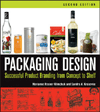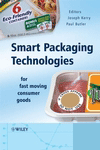If you have ever been tasked with considering what types of intellectual property protection were available for a new packaging design, copyright may not be the first thing that came to mind. After all, it is trademark law that is designed to protect the public’s association with a commercial name or logo, and in some cases the distinctive look (or “trade dress”) of a product and/or its packaging. Copyright, on the other hand, was designed principally to protect an author’s rights in literary and artistic works. Nevertheless, in some cases copyright may be available as an alternative or supplemental protection for product packaging.
Benefits of Copyright Protection
Copyright also has certain advantages over trademark when it comes to enforcement. In an infringement action between two similar packaging designs, there is no need to show a “likelihood of consumer confusion,” a multi-factor analysis that often requires expensive consumer surveys. Copyright law is only concerned with whether the defendant has copied the plaintiff, usually determined by examining if the works are “substantially similar.” Moreover, copyright law boasts the most effective mechanism (the Digital Millennium Copyright Act) for quickly getting infringing matter taken down from the internet.
The Catch: Originality and Creativity
In order to get a copyright registration you have to show that your packaging design is “original.” Originality in copyright law has two components. First, it must have been independently created, i.e., not copied. Second, a work must possess more than a mere de minimis quantity of creativity.
Many elements of product packaging design are deemed insufficiently creative for copyright protection, including common geometric shapes, simple color variations, and words and short phrases. There are generally two paths by which the owner of a product packaging design can demonstrate the requisite creativity.
The first is to incorporate into the packaging a drawing, logo or other artwork that is creative enough to merit copyright protection, and emphasize that artwork in the application. For example, General Mills’ copyrighted packaging for Cheerios incorporates a professional photograph (of a heart-shaped bowl containing cereal and strawberries). It clearly demonstrates enough creative authorship to merit copyright.
The second path is for packaging that doesn’t contain any individual element that is sufficiently creative in its own right. In those cases the copyright applicant’s best shot is to argue that the selection and arrangement of these un-copyrightable elements, considered as a whole, is creative enough to warrant protection.
General Mills’ attempt to register the packaging for its Larabar product is instructive as to the difficulty of pursuing the selection and arrangement path, especially for clean and minimalist designs. General Mills argued that its wrapper reflected many creative choices, including a logo and slogan, selection of color, and placement of text in a horizontal orientation around a rectangular frame. However, the Copyright Office found that this did not amount to a sufficiently high number of creative choices.
Depending on your individual circumstances, your best bet may be to seek protection for only the logo as a standalone work, and/or the packaging design generally as visual art, and/or the text on the package as a literary work.
|
6 Tips for Copyright Application Dave Kluft offers tips and pitfalls when planning a copyright application for product packaging:

|










